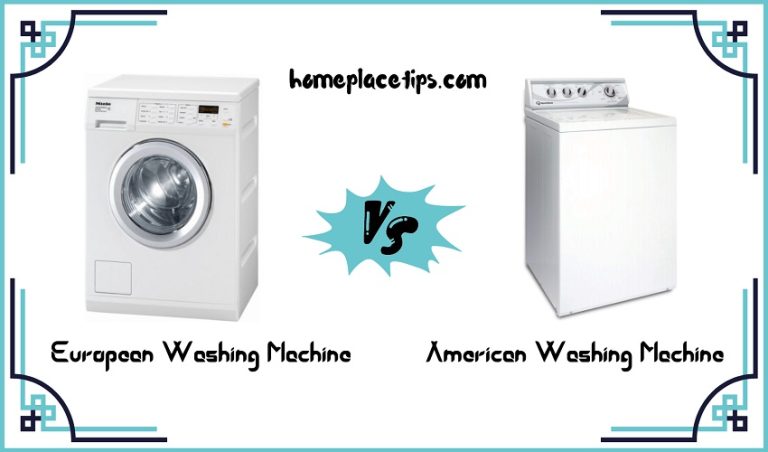Washing Machine Check Valve For Backflow Prevention (Beginners Guide)
Commonly, washing machines, lawn sprinklers, and garden hose spigots are equipped with a type of check valve to safeguard against the potential siphoning back of unsanitary water into the clean water supply.
What Is a Washing Machine Check Valve?
A washing machine check valve is a crucial component designed to prevent the unwanted backflow of water from the drainage system into the washing machine and, by extension, into the clean water supply.
This valve is typically installed in the drainage line of the washing machine and ensures that water flows in one direction only—away from the machine and into the designated drainage system. By incorporating a check valve, the risk of contaminants or wastewater entering the washing machine and, subsequently, the household’s water supply is significantly reduced.
This valve acts as a preventive measure against potential health hazards and helps maintain the integrity of the water used in laundry cycles. Regular inspection and maintenance of the washing machine check valve contribute to its effectiveness in ensuring a safe and efficient drainage process.
How Does a Check Valve Work?
A check valve is a mechanical device designed to allow fluid, such as water or air, to flow in one direction while preventing it from flowing backward. The basic principle behind a check valve is its internal mechanism, often a hinged flap or a spring-loaded disc, which opens to allow forward flow and closes to block reverse flow.
In the context of a washing machine, the check valve is typically installed in the drainage line. When the washing machine pumps out used water during a laundry cycle, the check valve opens to allow the water to flow into the drainage system or sewer line. After the cycle, when the washing machine is not actively draining, the check valve closes, preventing any backflow of contaminated water into the machine or, more critically, into the clean water supply.
This mechanism ensures the safety and integrity of the water supply, especially in appliances where the risk of backflow could pose health concerns. Check valves are widely used in various plumbing applications, including washing machines, to maintain the unidirectional flow of fluids and prevent potential contamination.

What does a washer check valve do?
A washer check valve plays a crucial role in preventing the backflow of wastewater into the washing machine and the clean water supply. Installed in the drainage system, typically within the washing machine’s drain hose or the plumbing connected to it, the check valve ensures that water flows in one direction—away from the washing machine and into the designated drainage system.
The valve opens during the washing machine’s draining cycle, allowing used water to exit the machine and enter the sewer or septic system. Once the draining process is complete, the check valve closes to block any reverse flow, effectively preventing the contaminated water from re-entering the washing machine or the household’s clean water supply.
This mechanism not only enhances the safety and hygiene of the water used in laundry cycles but also helps comply with plumbing codes and regulations that aim to prevent potential health hazards associated with backflow. Regular inspection and maintenance of the washer check valve contribute to its effectiveness in ensuring a unidirectional flow of water.
Can you put a check valve on washing machine drain line?
Yes, it is both possible and advisable to install a check valve on a washing machine drain line. A check valve serves as an essential component to prevent the backflow of wastewater into the washing machine and, subsequently, the clean water supply.
Typically installed within the drainage system, the check valve allows water to flow in one direction—away from the washing machine and into the designated drainage system. This proactive measure helps mitigate the risk of contaminants or sewage entering the washing machine, ensuring the water used in laundry cycles remains hygienic.
The installation of a check valve on the washing machine drain line is particularly beneficial in scenarios where the machine shares drainage lines with other appliances or fixtures. It adds an extra layer of protection against potential health hazards associated with backflow.
It’s crucial to follow manufacturer recommendations, local plumbing codes, and regulations when installing a check valve to ensure proper functionality and compliance. Regular maintenance and inspection of the check valve contribute to its efficacy in maintaining a unidirectional flow of water during the washing machine’s operation.

How do I know if my water check valve is bad?
Identifying a faulty water check valve involves observing certain signs and behaviors in your plumbing system. If you suspect that your water check valve may be bad, consider the following indicators. First, check for unusual noises, such as continuous water hammering or banging sounds, which can suggest that the check valve is not closing properly.
Additionally, if you notice a sudden drop in water pressure or experience difficulty maintaining a consistent water flow, it could be a sign of a malfunctioning check valve. Visual inspections for leaks around the valve or visible corrosion are also important indicators of potential issues. A
nother common symptom is water discoloration, as a failing check valve may allow water from different sources to mix. If you observe any of these signs, it’s advisable to consult with a professional plumber to assess the check valve’s condition and determine if repairs or replacements are necessary.
Regular maintenance and periodic checks can help ensure the proper functioning of the water check valve and prevent potential complications in your plumbing system.
Should I Fit a Washing Machine Check Valve?
Fitting a washing machine check valve is a prudent measure to enhance the safety and integrity of your plumbing system. The check valve serves as a crucial barrier against the backflow of wastewater into the washing machine and, by extension, the clean water supply.
This preventive device is particularly essential in scenarios where the washing machine shares drainage lines with other appliances, reducing the risk of cross-contamination. Installing a check valve is recommended to comply with plumbing codes and regulations, ensuring that your system aligns with safety standards.
It provides an additional layer of protection against potential health hazards associated with contaminated water. Regular maintenance and inspection of the check valve contribute to its efficacy in preventing backflow issues. Consulting with a professional plumber can help determine the most suitable type of check valve for your washing machine and ensure proper installation, offering peace of mind regarding the safety of your water supply.

Types of Check Valves for Washing Machine
Several types of check valves can be used for washing machines to prevent backflow and protect the clean water supply. Here are some common types:
Swing Check Valve
This type of check valve has a hinged flap that swings open in the direction of flow and closes to prevent backflow. It is suitable for horizontal installations and provides effective one-way flow control.
Spring-Loaded Check Valve
A spring-loaded check valve uses a spring mechanism to keep the valve closed when there is no forward flow. When water flows in the desired direction, the valve opens against the spring force. It is versatile and can be used in various orientations.
Inline Check Valve
Inline check valves are installed directly into the washing machine’s drain hose. They typically consist of a cylindrical body with a movable internal element that allows water to flow in one direction only.
Diaphragm Check Valve
Diaphragm check valves use a flexible diaphragm to control the flow of water. When water flows in the correct direction, the diaphragm flexes to allow passage, and it closes to prevent backflow.
Ball Check Valve
Ball check valves use a spherical ball inside the valve body. When water flows in the right direction, the ball moves away, allowing water to pass. The ball returns to its seat to block reverse flow.
Dual-Plate Check Valve
Dual-plate check valves have two plates or disks that pivot open during forward flow and close to prevent backflow. They are often compact and suitable for tight spaces.
FAQ:
Q: What is a washing machine check valve?
A: A washing machine check valve is a device installed in the drainage system of a washing machine to prevent the backflow of wastewater into the machine and the clean water supply.
Q: Why is a check valve necessary for a washing machine?
A: A check valve is necessary to ensure that used water from the washing machine drains efficiently in one direction, preventing the risk of contaminants or wastewater flowing back into the machine and potentially contaminating the clean water supply.
Q: Does my washing machine come with a built-in check valve?
A: Not all washing machines come with built-in check valves. Depending on the model and local plumbing requirements, additional check valves may need to be installed.
Q: Can I install a washing machine check valve myself?
A: While it’s possible for some homeowners to install a washing machine check valve, it’s recommended to consult with a professional plumber to ensure proper installation and compliance with local codes.
Q: Where is the washing machine check valve installed?
A: The check valve is typically installed in the drainage system, either within the washing machine’s drain hose or in the plumbing connected to it.
Q: How does a washing machine check valve work?
A: The check valve allows water to flow in one direction—away from the washing machine and into the drainage system. It closes to prevent backflow once the draining cycle is complete.
Q: What are the signs of a malfunctioning washing machine check valve?
A: Signs include unusual noises during drainage, water pressure issues, leaks, corrosion, and water discoloration.
Q: How often should I inspect my washing machine check valve?
A: Regular inspections, at least annually, are recommended to ensure proper functionality and identify potential issues early on.
Q: Can a washing machine share a drain line with other appliances without compromising the check valve’s effectiveness?
A: Yes, proper drainage system design and the use of backflow preventers can allow a washing machine to share a drain line with other appliances safely.
Q: Does the type of washing machine affect the choice of check valve?
A: The choice of a check valve may depend on the specific requirements of the washing machine and the plumbing system. Consult with a professional to determine the most suitable type for your setup.
As an Amazon Associate I earn from qualifying purchases.
- Can You Put Clouds Shoes in the Washing Machine? With Tips & Tricks - April 10, 2024
- European Washing Machine vs American – History, Design, Technology - March 27, 2024
- Can You Put Boxing Gloves In The Washing Machine? – Expert Tips - March 25, 2024



![How to Reset Maytag Centennial Washer [Easy Ways!]](https://homeplacetips.com/wp-content/uploads/2023/12/Best-3-Top-Load-Washers-for-2022_000025443-768x432.webp)
![LG Washing Machine Sound Problem Troubleshooting [Solved 2024]](https://homeplacetips.com/wp-content/uploads/2023/12/How-To-Turn-Sound-On_Off-On-A-LG-Washing-Machine_000000533-768x432.webp)
![Why Your LG Washer Sounds Like a Jet Engine! [Reasons 2024]](https://homeplacetips.com/wp-content/uploads/2023/12/Top-5-Best-Washing-Machine-2023_000009918-768x432.webp)

![Whirlpool Duet Washing Machine Error Codes [Explained 2024]](https://homeplacetips.com/wp-content/uploads/2023/12/Whats-the-Difference__-GE-Front-Load-Laundry-Sets_000003581-1-768x432.webp)